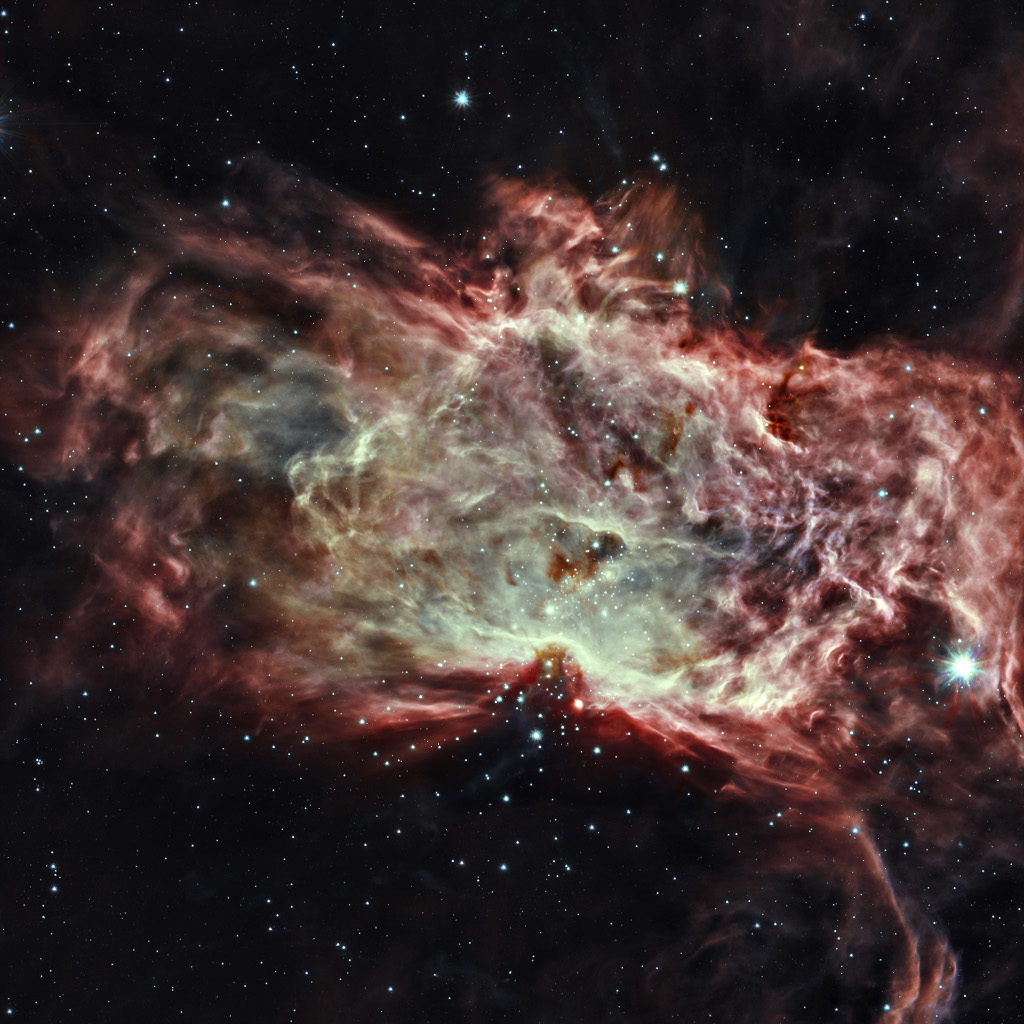2021年04月17日
Inside the Flame Nebula
Image Credit: NASA, JPL-Caltech, IPAC Infrared Science Archive – Processing: Amal Biju
Explanation: The Flame Nebula is a stand out in optical images of the dusty, crowded star forming regions toward Orion’s belt and the easternmost belt star Alnitak, a mere 1,400 light-years away. Alnitak is the bright star at the right edge of this infrared image from the Spitzer Space Telescope. About 15 light-years across, the infrared view takes you inside the nebula’s glowing gas and obscuring dust clouds though. It reveals many stars of the recently formed, embedded cluster NGC 2024 concentrated near the center. The stars of NGC 2024 range in age from 200,000 years to 1.5 million years young. In fact, data indicate that the youngest stars are concentrated near the middle of the Flame Nebula cluster. That’s the opposite of the simplest models of star formation for a stellar nursery that predict star formation begins in the denser center of a molecular cloud core. The result requires a more complex model for star formation inside the Flame Nebula.
Tomorrow’s picture: airglow rainbow
火焰星云之内
影像提供: NASA, JPL-Caltech, IPAC Infrared Science Archive – 影像处理: Amal Biju
说明: 在记录恒星形成区群聚的猎人腰带与最东侧的参宿一的可见光影像里,1,400光年远的火焰星云 (NGC 2024),是其中非常吸睛的天体。而在这幅史匹哲太空望远镜的红外光影像里,参宿一是影像右缘的那颗亮星。这片宽约15光年的红外光视野,让我们得以一窥这团星云的辉光气体和不透光尘埃内之景观。此外,在影像中心附近可见到许多深藏在NGC 2024之内,刚在20万至150万年前诞生的恒星。观测数据显示,最年轻的恒星反而聚集在火焰星云星团的中心附近。这与描述恒星形成区内,恒星如何形成的极简模型大异其趣,因为此模型预言恒星诞生起始于分子云较致密的核心(,然后渐次向边缘扩展)。这项结果显示,要解释火焰星云内的恒星形成活动,得用较复杂的恒星形成模型。
明日的图片: airglow rainbow



